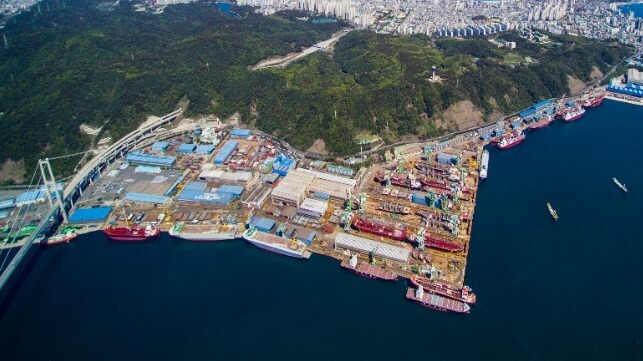South Korea’s Shipbuilding Orderbook Reaches Six-Year High

Despite concerns that the global boom in shipbuilding orders is slowing, South Korean shipbuilders’ orderbook reached a six-year high in April 2022. Driven by the strength of the market in 2021 and brisk orders in the first four months of this year, the South Koreans reported their orders are now at their highest point since April 2016.
Overall shipbuilding orders were down by a third in April according to data from Clarkson Research Service. They showed that a total of 71 ships were ordered last month accounting for 2.51 million gross tons. China and South Korea continue to be the two countries dominating the new building market but partially spurred by the large LNG carrier order for Qatar, China had nearly twice the market share versus the South Koreans in April. China received orders for 45 vessels which totaled 1.54 million gross tons.
Despite coming in second in April, South Korea’s shipbuilders received orders for 16 additional ships totaling 820,000 gross tons. Deliveries in some cases are now being pushed beyond 2024 as the larger shipyards report their building slots are fully committed. This has created opportunities for mid-sized yards which can offer quicker deliveries. K Shipbuilding, the restructured for STX, is winning orders for tankers and recently booked its first containerships and car carriers according to a report in Lloyd’s List.
While the pace of orders slowed in April, for the first four months of 2022, the South Korean shipbuilders booked an 11 percent increase in orders versus 2021. Clarksons’ data pegs the orders at 5.81 million gross tons, giving the South Koreans 46 percent of the total global orders for new ships in 2022.
The orders in 2022 helped to drive the South Koreans’ total orderbook to 688 ships. The orders are reported to total 32.68 million gross tons. The total number of ships is slight behind 2016 when the book topped out at 692 ships but with the trend for larger vessels, the average size of ship and total gross tons exceeded the prior peak.
South Korea also points to its strategy of focusing on high-value ships, including LNG carriers, helping to drive up the average price per ship. Gas carriers are reported to cost as much as 30 to 40 percent more than a containership. Globally shipyards have been under pressure due to rising material and labor costs, but the South Koreans reported in April their average price per ship was now $143 million. The Clarksons’ data shows it is 66 percent higher than their Chinese rivals which were reported to be averaging $86 million per ship.
Orders for LNG carriers and mid-sized ships have been driving much of the recent growth in the South Korean shipbuilders’ orderbooks. Hyundai Heavy Industries’ Mipo Dockyard, for example, reports it has been leading in these two categories. Hyundai Mipo Dockyard won 38 vessels out of 65 orders for product carriers of between 22,000 and 55,000 dwt through April this year, according to Maeil Business News Korea. The shipyard also won 19 out of 22 LPG carriers ranging from 20,000 to 45,000 CBM and eight out of ten ro/ro vessel orders.
